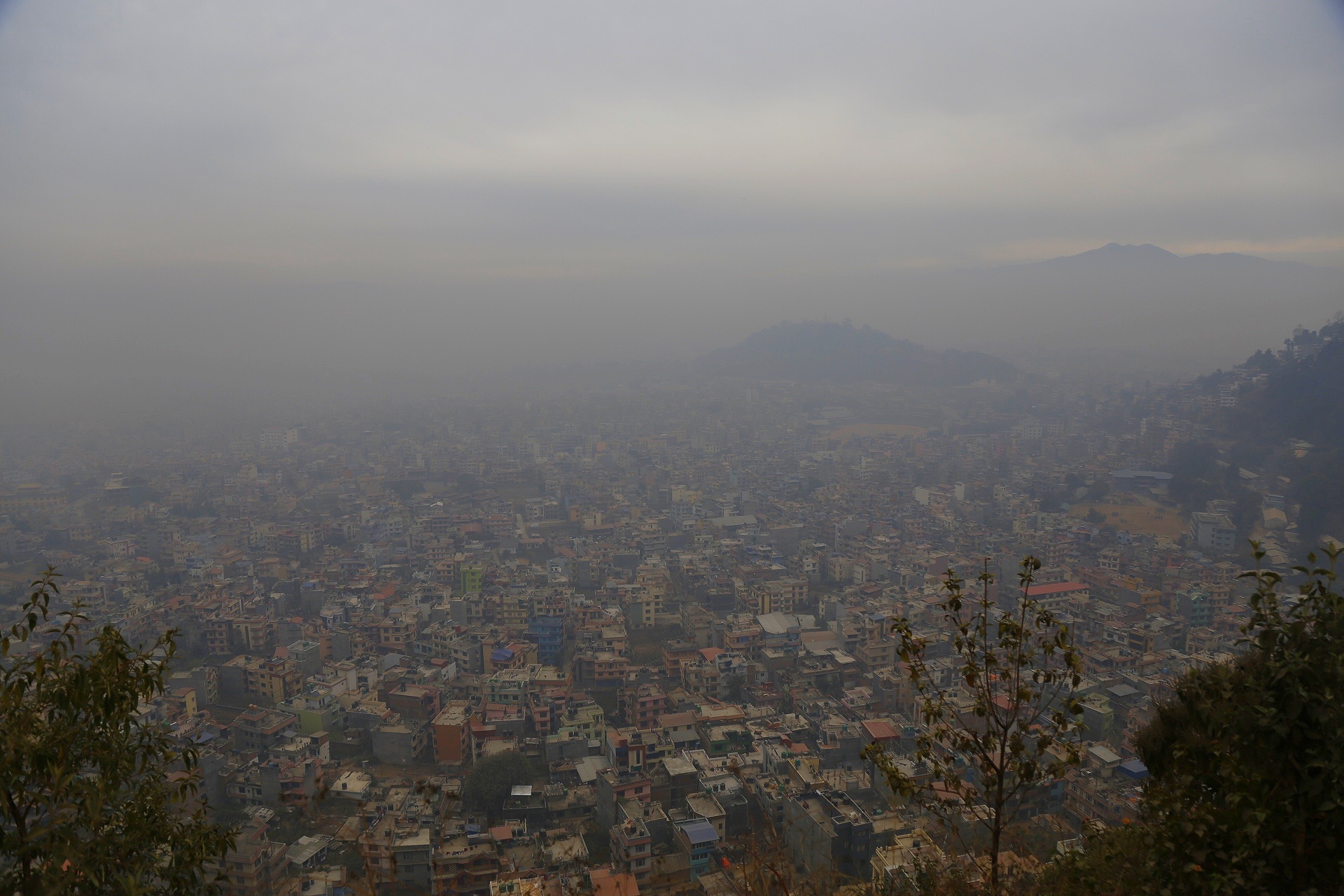Report on Air Pollution in Jakarta: A Sustainable Development Goals Perspective
Executive Summary
This report examines the severe air pollution crisis in Jakarta, Indonesia, with a specific focus on the disparity between indoor and outdoor air quality and its profound implications for the Sustainable Development Goals (SDGs). The findings indicate that indoor environments pose a greater health risk than outdoor environments, particularly for low-income populations. This situation presents a significant obstacle to achieving SDG 3 (Good Health and Well-being), SDG 10 (Reduced Inequalities), and SDG 11 (Sustainable Cities and Communities). A multi-scalar policy approach is required, integrating behavioural, regulatory, and structural interventions to mitigate this public health crisis and advance the SDG agenda.
Analysis of Air Pollution and its Impact on SDG 3: Good Health and Well-being
Jakarta’s air quality poses a direct threat to public health, undermining progress towards SDG 3. Residents are exposed to hazardous levels of fine particulate matter (PM2.5), which leads to severe health conditions and reduces life expectancy.
Key Health and Exposure Findings
- Severe Health Consequences: PM2.5 exposure is linked to respiratory illnesses, cardiovascular disease, strokes, and premature death. In 2021, pollution levels were estimated to reduce average life expectancy by 2.4 years.
- Elevated Indoor Pollution: Contrary to common assumptions, indoor air quality is often worse than outdoor quality. Average indoor PM2.5 concentrations (40.7 µg/m³) exceed outdoor averages (37.8 µg/m³).
- Violation of Global Health Standards: Both indoor and outdoor pollution levels are more than seven times the World Health Organization’s guideline of 5 µg/m³.
- Undetected Pollution Spikes: Episodic indoor pollution spikes, primarily from cooking, smoking, and waste burning, can reach 40 to 100 times the WHO standard, remaining undetected by outdoor monitoring systems.
Socioeconomic Disparities and the Challenge to SDG 10: Reduced Inequalities
The burden of air pollution is not distributed equally, exacerbating existing socioeconomic divides and directly challenging the objectives of SDG 10. Vulnerable populations face a disproportionately higher risk, entrenching a cycle of environmental and health inequality.
Dimensions of Inequality
- Income-Based Exposure Gap: Lower-income households experience nearly double the average indoor PM2.5 concentration compared to higher-income households.
- Structural Vulnerabilities: This disparity is driven by poor housing quality in low-income areas, characterized by permeable walls, poor insulation, and inadequate ventilation, which facilitates the infiltration of polluted air.
- Hyperlocal Pollution Sources: Low-income neighbourhoods are more frequently exposed to hyperlocal pollution from waste burning and indoor smoking, compounding their health risks.
Policy Recommendations for Achieving SDG 11: Sustainable Cities and Communities
Current policy frameworks, which rely on outdoor air quality data, systematically underestimate the true public health burden. To align with SDG 11’s goal of creating safe, resilient, and sustainable urban environments, a comprehensive and integrated strategy is essential.
Proposed Multi-Scalar Interventions
-
Integrated Monitoring and Data Collection
Develop an integrated monitoring strategy that combines outdoor air quality mapping with extensive, demographically representative indoor monitoring. This is crucial for accurately assessing exposure and designing targeted policies that protect all residents, particularly those most at risk.
-
Behavioural Interventions
Implement policies to address household and neighbourhood pollution sources, contributing to SDG 3 and SDG 12 (Responsible Consumption and Production).
- Enforce smoking bans in all indoor spaces.
- Incentivize the transition to clean cooking technologies, such as electric stoves, to support SDG 7 (Affordable and Clean Energy).
- Launch public education campaigns to raise awareness of indoor air quality risks.
-
Regulatory Measures
Strengthen environmental governance to manage community-level pollution sources in line with SDG 11 and SDG 12.
- Enforce anti-waste burning laws through community monitoring and penalties.
- Expand programs like the Waste Bank to promote the principles of reduce, reuse, and recycle.
- Regulate emissions from small-scale industries and local construction activities.
-
Structural Improvements
Invest in housing and infrastructure to build resilience against pollution, directly addressing SDG 10 and SDG 11.
- Provide subsidies or low-cost financing for pollution-proofing renovations in low-income housing, including sealing walls and improving ventilation.
- Ensure subsidized access to air purification technologies for disadvantaged households as an immediate protective measure.
Conclusion: Integrating Environmental Justice into Urban Development
Addressing Jakarta’s air pollution crisis requires a holistic approach that tackles emissions at their source, regulates community practices, and strengthens household resilience. By integrating these behavioural, regulatory, and structural strategies into broader urban planning and public health agendas, policymakers can mitigate health risks, reduce deep-seated inequalities, and make significant progress toward achieving the Sustainable Development Goals for a healthier and more equitable urban future.
1. Which SDGs are addressed or connected to the issues highlighted in the article?
-
SDG 3: Good Health and Well-being
- The article extensively discusses the severe health impacts of air pollution in Jakarta, including respiratory illnesses, cardiovascular disease, strokes, premature death, and a reduction in life expectancy. This directly relates to ensuring healthy lives and promoting well-being for all.
-
SDG 7: Affordable and Clean Energy
- The article mentions fossil fuel power plants as a major source of outdoor pollution and suggests transitioning from biomass or liquefied petroleum gas (LPG) stoves to electric cooking technologies to reduce indoor pollution. This connects to the goal of ensuring access to clean and modern energy.
-
SDG 10: Reduced Inequalities
- A key theme is the disproportionate impact of air pollution on lower-income households. The article states that these households “experience nearly double the average indoor fine particulate matter concentration” due to poorer housing quality and proximity to hyperlocal pollution sources, highlighting the intersection of environmental hazards and socioeconomic inequality.
-
SDG 11: Sustainable Cities and Communities
- The article is centered on the urban environmental crisis in a megacity, Jakarta. It addresses issues of urban air quality, waste management (waste burning), housing quality, and the need for integrated urban planning and environmental governance to make cities inclusive, safe, resilient, and sustainable.
-
SDG 12: Responsible Consumption and Production
- The problem of waste burning as a source of pollution is highlighted. The article suggests solutions like enforcing anti-waste burning laws and implementing the “Waste Bank program,” which promotes the 3R principles (reduce, reuse, and recycle), aligning with the goal of sustainable consumption and production patterns.
2. What specific targets under those SDGs can be identified based on the article’s content?
-
SDG 3: Good Health and Well-being
- Target 3.9: “By 2030, substantially reduce the number of deaths and illnesses from hazardous chemicals and air, water and soil pollution and contamination.” The article’s focus on pollution-related illnesses, premature deaths, and reduced life expectancy in Jakarta directly addresses this target.
-
SDG 7: Affordable and Clean Energy
- Target 7.1: “By 2030, ensure universal access to affordable, reliable and modern energy services.” The recommendation to provide “incentives or subsidies to encourage transitions from biomass or liquefied petroleum gas stoves to electric cooking technologies” aims to improve access to cleaner, modern energy for cooking, which is a key component of this target.
-
SDG 10: Reduced Inequalities
- Target 10.2: “By 2030, empower and promote the social, economic and political inclusion of all, irrespective of…economic or other status.” The article’s emphasis on the need for policies that protect vulnerable, low-income populations from disproportionate pollution exposure and its call for “environmental justice” align with the principle of reducing inequality and promoting inclusion.
-
SDG 11: Sustainable Cities and Communities
- Target 11.6: “By 2030, reduce the adverse per capita environmental impact of cities, including by paying special attention to air quality and municipal and other waste management.” This is a central theme, as the article analyzes Jakarta’s severe air pollution and discusses waste management issues like waste burning.
- Target 11.1: “By 2030, ensure access for all to adequate, safe and affordable housing and basic services and upgrade slums.” The article links poor housing quality in low-income areas (permeable walls, inadequate insulation) to increased indoor air pollution and suggests “structural housing improvements” as a key intervention.
-
SDG 12: Responsible Consumption and Production
- Target 12.5: “By 2030, substantially reduce waste generation through prevention, reduction, recycling and reuse.” The mention of the “Waste Bank program in Jakarta, which applies the 3R principles of reduce, reuse and recycle,” is a direct reference to strategies aimed at achieving this target.
3. Are there any indicators mentioned or implied in the article that can be used to measure progress towards the identified targets?
-
Concentration of Fine Particulate Matter (PM2.5)
- The article explicitly uses PM2.5 levels as a primary indicator of air pollution. It provides specific measurements: “outdoor fine particulate matter levels in Jakarta average 37.8 micrograms per cubic metre, indoor concentrations average 40.7 micrograms per cubic metre.” These figures can be used to track progress against WHO guidelines and measure the effectiveness of policies under SDG 11 (Target 11.6) and SDG 3 (Target 3.9).
-
Mortality and Morbidity Rates from Air Pollution
- The article implies the use of health-based indicators by stating that pollution leads to “respiratory illnesses, cardiovascular disease, strokes and premature death” and that it was “estimated to reduce life expectancy by 2.4 years on average.” Tracking changes in these health outcomes would measure progress towards SDG Target 3.9.
-
Disparity in Pollution Exposure Across Income Groups
- The article provides a comparative indicator of inequality: “Lower-income Jakarta households experience nearly double the average indoor fine particulate matter concentration of higher-income households.” Measuring the reduction of this gap over time would serve as a direct indicator for progress on SDG 10 (Target 10.2) in the context of environmental justice.
-
Adoption of Clean Cooking Technologies
- The suggestion to “encourage transitions from biomass or liquefied petroleum gas stoves to electric cooking technologies” implies an indicator: the percentage of households using clean and modern cooking fuels and technologies. This would measure progress towards SDG Target 7.1.
-
Waste Management Practices
- The discussion of “stricter enforcement of anti-waste burning laws” and the “Waste Bank program” implies indicators related to waste management. Progress towards SDG Target 12.5 could be measured by the reduction in illegal waste burning incidents and the volume of waste managed through the 3R (reduce, reuse, recycle) principles.
4. Table of SDGs, Targets, and Indicators
| SDGs | Targets | Indicators |
|---|---|---|
| SDG 3: Good Health and Well-being | 3.9: Substantially reduce deaths and illnesses from hazardous chemicals and air pollution. |
|
| SDG 7: Affordable and Clean Energy | 7.1: Ensure universal access to affordable, reliable and modern energy services. |
|
| SDG 10: Reduced Inequalities | 10.2: Empower and promote the social, economic and political inclusion of all. |
|
| SDG 11: Sustainable Cities and Communities |
11.1: Ensure access for all to adequate, safe and affordable housing. 11.6: Reduce the adverse per capita environmental impact of cities, especially air quality and waste management. |
|
| SDG 12: Responsible Consumption and Production | 12.5: Substantially reduce waste generation through prevention, reduction, recycling and reuse. |
|
Source: eastasiaforum.org







